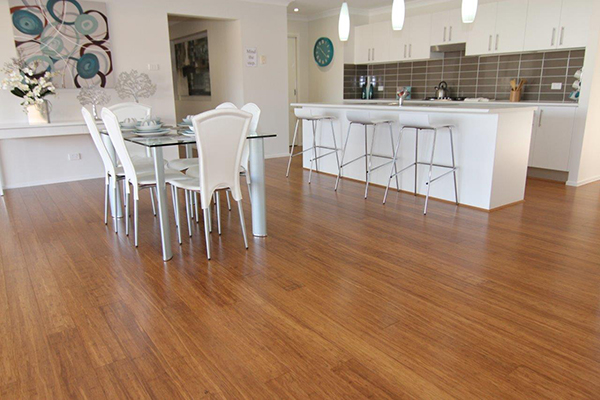Compressed Strand Woven Bamboo Flooring Manufacturing Process
Dec 3, 2025, 9:20 AM
Bamboo flooring is rapidly becoming a true competitor of hardwood floors; many homeowners turn to this cheaper flooring alternative as an attractive alternative to laminate, wood and carpet. In response, floor makers have experimented with various bamboo material configurations to create the most rugged and attractive floor choice.
The three main types of bamboo flooring are woven, solid and constructed. What is the difference between the three types of bamboo, can you ask? There is a big difference between each variation, based on bamboo plant's bamboo plant production techniques.
What do you mean by strand woven flooring?
It offers a friendly alternative to tree-floor flooring; bamboo does not need decades of growth to be mature enough for processes of production. This stunning reality plant grows to maturity by the end of seven years, making it a widespread resource for the flooring industry. Although single bamboo stems may appear fragile, these incredibly robust plants can be transformed into a pavement product that rivals the strength of pure wood flooring.
Woven bamboo flooring is also referred to as bamboo wire. This type of bamboo flooring goes through a number of different manufacturing processes to form a board. Production plants place the bamboo rods first inside a machine that essentially breaks the material into thin threads, or fibers. These fibers are then sent to another manufacturing sector that adds a specialized resin, or adhesive, to the blend.
The addition of the resin creates strong bonds between each bamboo fiber for the initial stages of a flat panel, this fiber and resin mixture must be run through another machine to compress the materials. The compression machine creates large bamboo fiber and resin blocks that are ready for cutting. Special cut slice cutting blocks in the family flooring consumers see in the home improvement shops.
What is the process?
Strand woven bamboo flooring is similar to interlaced shapes but is produced in a different process. Raw bamboo is cut into large strips; these strips are woven together with glue during production processes. The finished glued bamboo strips create solid bamboo floorboards.
Engineered uses solid bamboo material and applies it to a basic wood core; this form of bamboo flooring is relatively robust, but it has a big disadvantage compared to bamboo fabrics. Expansion and contraction from heat and moisture sources can easily deform and break engineered bamboo. The bamboo layer, attached to the wood core, reacts differently to different temperatures, causing both materials to expand and contract conflict rates.
Each bamboo flooring manufacturer has a slightly different manufacturing process for each type of floor, but a common goal for any chosen flooring is to remove moisture from raw bamboo. Before the bamboo becomes thin filaments for the woven fabric version, the manufacturer must dry the plant to the lowest humidity percentage. For example, a bamboo stem that has a moisture content of nine percent during production can cause defects after the final installation in a home.
Strand woven bamboo flooring in unilin click is a lot more beneficial than other forms of bamboo floors including the vertical and horizontal designs. It is stronger and looks a lot better than the latter forms.
Consumers should research the manufacturing company that provides them flooring boards; Low cost manufacturing practices will be evident in laminate flooring. Unlike end product, bamboo fabrics should not be floated as a choice of installation. Flooring boards must be glued or nailed to a floor.
Also, those radiant floor heating homeowners do not have to install woven bamboo flooring above the system, the aisles cannot withstand the heating element that can cause the floor to deform, ripple, or crack.
The Strand woven bamboo parquet is made of fiber bamboo. For this purpose, the individual fibers are softened and then pressed together under high pressure. The surface is extremely hard and durable.
SURFACE VARNISHED
The multi-sealed surface is robust against environmental influences and easy care. Due to the extremely matt sealing, the bamboo parquet retains its natural character. The bamboo parquet has a light micro phase which enhances the beautifully structured character of the bamboo parquet.
COLOR NATURAL LIGHT
The natural color reflects the natural appearance of the bamboo stems and can be combined with any furniture of different color. The bamboo parquet gives the rooms freshness and is ideal in living rooms with difficult lighting conditions.



 皖公网安备 34180202000049号
皖公网安备 34180202000049号